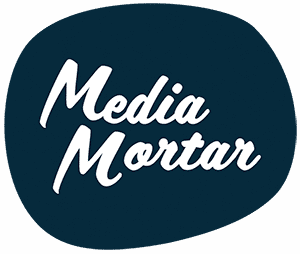
So, a marketing specialist has told you that you need to start a blog. What next?
Don’t sit in front of your computer wondering how to put pen to virtual paper.
Pour yourself a cup of creativity (aka coffee) and start working through this step by step guide for how to start a blog.
Your new blog is about to become one of your most valuable marketing assets – just keep an eye on your Google Analytics to see why.
One of our client’s blogs single-handedly is responsible for 110,000 visitors per month to their website, the kind of web-traffic we know most small business owners would trade their best employee for.
Results like this are yours for the making when you know what to do.
Want-to-be-bloggers, pick up your pencils and get ready to start a blog for your business with this guide.
Step 1: Know your audience
If there’s one tip to start a blog worth stringing up in lights, it’s this – write with an audience in mind.
Before picking up a pen, start by asking, who do you want to talk to? Who don’t you want to walk to? And start seriously questioning why your audience should read your blog in the first place.
Once you’ve articulated who will be motivated to read your new blog, you’ll find the words and the creative juices flow more freely.
If you’re unsure where to start a blog, we wrote a five-step guide to defining your target audience, over here, which will get you crystal clear on who’s listening.
Step 2: Create a blog editorial plan
Throwing blog topics at the wall like spaghetti is never a good idea. If you want to be a strategic communicator, you need to plan like one.
We’d suggest downloading this template to map out your editorial plan, to ensure you stay on track.
It’s no coincidence the first step in our DIY Content Builder is determining how frequently you intend on blogging.
Most small business owners start with the intention of one post per month when they start a blog, but the reality is a quarterly blog is a more realistic commitment.
Step 3: Research keywords
The actual writing of your blog post should be driven by two things:
- The relevance of the topic to your target audience (see step 1)
- The volume of keywords from people looking for it
Before writing, we always consult Google Keyword Planner to find the search volume of people searching for the exact topic we were intending on writing about.
The reality is that if no one is searching for your blog topic, your blog post will fall on Google’s deaf ears.
That’s not to say a blog topic with low search volume shouldn’t be written or considered in your editorial calendar, but if the search volume is alarmingly low, we would argue you need to be even more clear on your target audience.
Some blog topics are so niche, that although the volume of research is negligible, those who do search for it are such super-fans of this interest area. If that’s the case, there’s still good argument that your content will pack a powerful punch, even only for a micro, but super-engaged audience.
Step 4: Set up the blog page on your website
Let’s talk technical-turkey for a minute.
Before launching your new blog, you’ll need to login to the back end your website for this to set up a ‘blog’ page, pin it to the website home page and choose a format that works for you.
Within most CRM theme-builders you can choose your page layout, including a hierarchy of text size to make reading easier.
We strongly recommend you build a style guide for this process so you can ensure all blog posts look and feel the same on your site as you continue to upload.
If you’re unsure – your web developer will be able to make some recommendations for you.
Step 5: Start writing
 Dust off those memories of creative writing from primary school – start mapping out what inclusions you might add to the start, middle and end of your blog.
Dust off those memories of creative writing from primary school – start mapping out what inclusions you might add to the start, middle and end of your blog.
You’ll notice most blogs follow a series of ‘frequent formats’ – whether it be a listicle (like this one), ultimate guide to something (with fixed headings), collection of the 10 best items (similar to a listicle but driven by images), long-form feature or a review style.
Use your headings like the bumper rails in a game of ten pin bowling and simply write between the heading-rails.
Spend extra time getting your introduction right, as this is likely to be the part of the blog that the audience is going to spend the most time engaging with.
Step 6: Proofread your work
In the words of Ernest Hemingway, the first draft of anything is shit. And any professional copywriter will tell you the same thing.
As part of your process, review your work at least twice before going live on your blog.
We are so passionate about the proofreading stage that in our content builder template we insist you check your work twice, marking your draft as a Version 1 (v1) and Version 2 (v2).
Better yet, print your post out and coax someone else to review it for you, red pen and all.
Step 7: Make it pretty and optimise your upload
 Words are only one part of the blog equation. You’re going to need images and formatting to go with it too.
Words are only one part of the blog equation. You’re going to need images and formatting to go with it too.
Since skim reading is the new norm, you’ll want to arrange your content with lots of white space, bullet points, headings and breaks, so the reader can scurry to where the pertinent information can be found.
When it comes to visuals, you’ve got the option of stock imagery, but our preference, if possible, is to create custom images that relates to your topic to keep the reader engaged on the page.
Beyond images, your chosen CRM will have nuances when it comes to uploading your content to make sure it performs at its best.
A few of the optimisation steps we take on each of our posts, is to ensure any links like this, open in new tabs, ensuring all our images have ALT text and the keyword in the description of the image in the backend.
Small things most of you won’t see – but make a big difference to the delivery (and your SEO, but more on that later).
Step 8: Give people something to do at the end of the post
Never underestimate the power of a call to action.
Very few people are writing blog posts just to fill people’s day with well-crafted words. Chances are you’re starting a blog because the blog post contributes to a higher purpose, i.e. generating a lead or driving a sale.
Calls to actions can be seamlessly woven into blog posts, whether it be contact us, book now, download now.
Or, if you’re unsure how to weave a call to action into your work, email one of our content crew hello@mediamortar.com.au … see what we did there?
Step 9: SEO the shiz out of it
Most CRM’s are smart enough to include an SEO wizard which takes a lot of the guesswork and confusion out of Search Engine Optimisation.
If you’re using WordPress, you can use the Yoast plugin which uses a traffic light system to denote how good your SEO-juice is to the website.
As content creators first and foremost, we don’t like to obsess too much over a glowing green SEO light.
While your SEO is important, the number one objective is making sure your post offers value to the reader, rather than stuffing them full of keywords that your reader will automatically tune out of.
Step 10: Share your work far and wide!
You know the biggest mistake we see when it comes to company’s blogging? Not doing anything with them once they go live.
Once you’ve written a blog post, make sure you share it far and wide, and cut it up into as many social media captions you can muster.
For us, every post makes an Instagram and Facebook post to announce it live, fills a spot in our regular eNewsletter and can also make for a regular LinkedIn post too.
Suddenly, each blog post is now cut at least three or four ways and all the time you’ve invested into writing those words will become well worth the effort.

By Hannah Statham
Hannah Statham is The Boss at Media Mortar. She’s a heavy weight wordsmith, punching with puns, analogies and metaphors that leave readers wanting more. When she’s not refreshing her Instagram feed, you’ll find Hannah walking her rescue greyhound Olivia.



Recent Comments